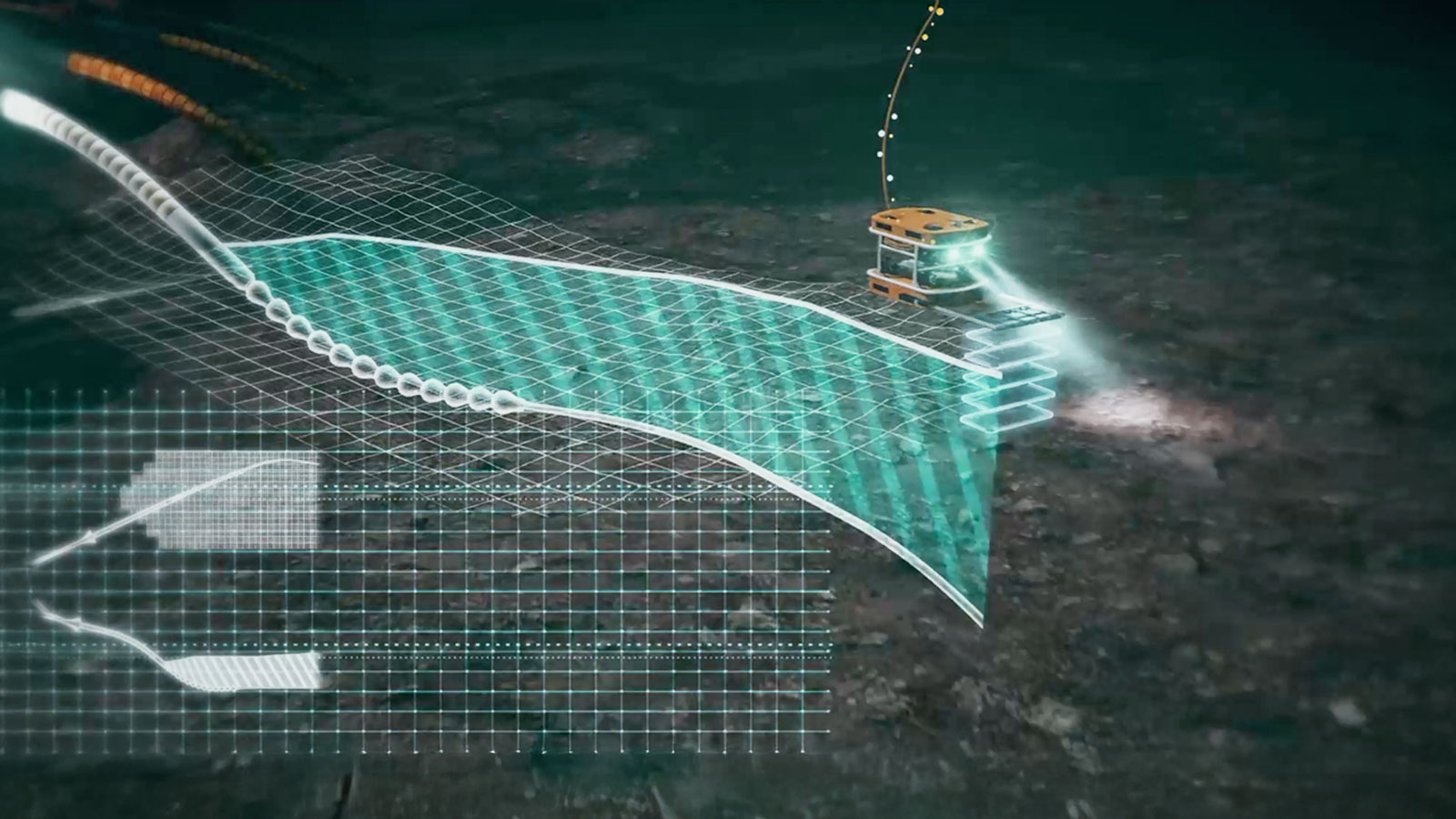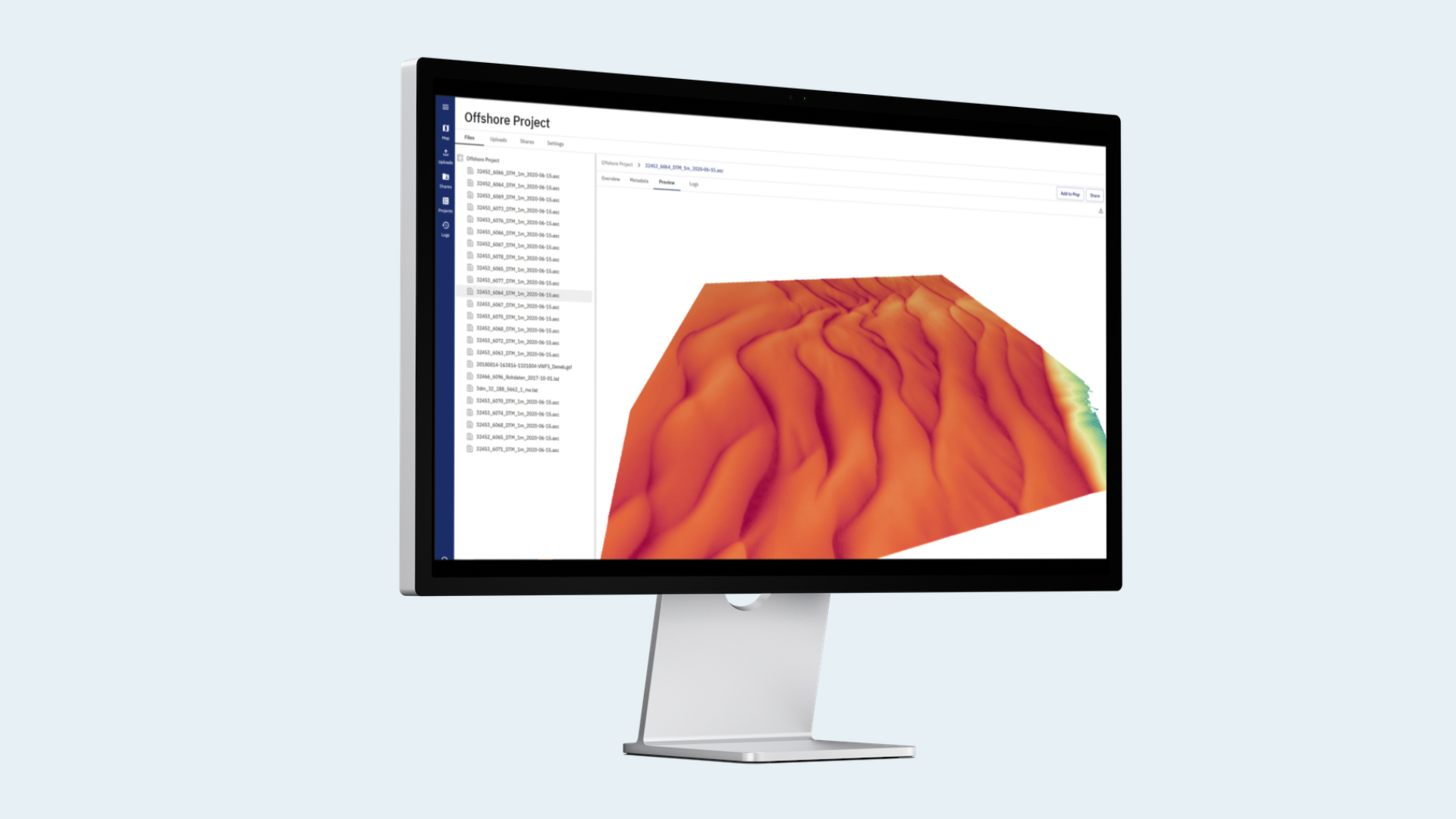Frequently Asked Questions (FAQ)
Find Your Answer Here
See below our FAQ answered
-
What is a geospatial data platform?
A geospatial data platform, such as the one developed by north.io is designed to manage, visualise, and analyse both terrestrial and marine geospatial data efficiently. This platform leverages cloud-native technology to provide scalable data storage and processing, ensuring users can handle growing data volumes with ease. It supports 2D and 3D visualisations directly in a web browser, requiring no special hardware or software. This enables users to find, share, and visualise data seamlessly, enhancing the efficiency and accuracy of geospatial data handling for various projects. Additionally, the platform includes advanced features such as smart geospatial search, which allows users to locate hydrographic survey and underwater inspection data quickly using a map-based interface. This significantly improves data management efficiency by reducing the time needed to find specific datasets. The platform also supports secure data storage and protection, making it a reliable solution for managing valuable geospatial data across different environments. Read more about geospatial data.
-
Which industries are supported?
Our geospatial data platform supports a diverse range of industries. Offshore wind farm developers and asset owners, including utilities and transmission system operators (TSOs) like Tennet, benefit greatly from our advanced data management and visualisation capabilities. Offshore services, such as survey companies, construction and dredging companies, and power cable and wire manufacturers, utilize our platform to streamline their workflows and enhance efficiency. Additionally, governmental authorities, including hydrographical institutes, ports, environmental agencies, and geospatial offices, rely on our platform for accurate geodata analysis and decision-making. Our comprehensive solution caters to the unique needs of these sectors, ensuring reliable and efficient geospatial data management. -
What are the supported file formats?
Our geospatial data platform supports a wide variety of data formats, catering to multiple types of geospatial data needs. These include:
- Multibeam echosounder (MBES): GSF, XTF, ALL, KMALL, S7K, JSF, R2Sonic, XSE, SeaBeam, QPD
- Side-Scan Sonar (SSS): XTF, JSF, SDF, SDS, S7K, TIL
- Sub-bottom Profiler (SBP): XTF, JSF, SDF, SDS, S7K Magnetics: TXT
- Seismic: SEGY, SEGD
- Pointclouds: LAS, LAZ, PTS, XYZ, CSV
- Raster/Vector: SHP, GDB, GeoJSON, KML, GeoTiff, JPG, PNG, ASC
- Other: PTS, ASC, TXT, CSV, AGS, XLSX, DOCX, PDF, XML, S12, UKOOA, MOV, MP4, WEBM, BMP, JPG, PNG, WCD, RAW
North.io's cloud solution combines different worlds in one platform, eliminating the need for dedicated software suites to access, find, and visualise information—even for non-experts. Read more about our supported data file formats.
-
What data quality control algorithms are available?
Data quality control for raw sensor datasets is crucial before proceeding with further analytics. For Multibeam datasets, the algorithms focus on various parameters including the altitude-range ratio, beam footprint measurements (across track, along track, and area), spatial coverage, data point density, general data point spacing, and resolution (both horizontal and vertical). Additionally, sensor motion is also taken into account.
For Side Scan Sonar datasets, quality control algorithms assess the altitude-range ratio, beam footprint along track, coverage, general data point spacing, and signal quality (signal-to-noise ratio and signal footprint across track). For Subbottom profiler data, the algorithms consider cmp fold, beam footprint, coverage, data point spacing, horizontal resolution, and signal-to-noise ratio. Magnetics data is checked for altitude, data point spacing (both across track/line spacing and along track), footprint, and signal-to-noise ratio. Lastly, Pointclouds are evaluated based on point density and point spacing.
-
What data analysis functions are available?
Data analysis on raw datasets, particularly at the pointcloud level, involves a variety of specialised algorithms tailored to specific use cases. These algorithms include Anisotropy, which measures directional dependency, and Change of Curvature, which identifies variations in curvature. Geomorphons categorize landform elements, while Gradient and Gradient Factor assess slope steepness and changes. Horizontal and Vertical Curvature algorithms evaluate surface curvature in respective planes. Additional functions such as Linearity, Maximal Curvature, Mean Curvature, Minimal Curvature, Omnivariance, Planarity, Point Density, and Point Spacing provide detailed surface analysis. Other significant functions include Rotor, Slope Aspect, Slope Steepness, Sphericity, Topographic Positioning Index, Terrain Ruggedness Index, and Unsphericity, each contributing to a comprehensive understanding of the terrain and underlying features. Read more on data analysis.
-
How does north.io ensure data security on the platform?
We, north.io, with our Geodata Platform take data security seriously and implemented several key measures to ensure the safety of customer data:- Cloud Provider Security: Our technological basis allows to use different public cloud providers for our ocean data platform solutions, which adhere to high-security standards such as ISO 27001, ISO 50001, and IT Grundschutz certifications. This ensures strong information security management, energy efficiency, and compliance with GDPR for data protection.
- Application Security: TrueOcean addresses risks like data theft, corruption, and access blocking. Features include:
- Data encryption at rest and in transit
- Automated backups on a daily based and recovery options from geographically distributed S3 storages
- Application monitoring for high load, traffic and other security relevant threats
- Network limitations on request to ensure only allow only specific IPs access to the application
- Georedundant storage integration for high availability of valuable ocean data assets
- Integration with corporate authentication servers (e.g., Active Directory)
- Two-factor authentication (2FA)
- Logging and auditing for user activity, with alert mechanisms for suspicious behavior
- Distributed product architecture supporting node redundancy for enhanced reliability
- Secured Cloud Environment: Each customer gets a virtual and network-based isolated workspace in a secure cloud environment where only they can access their data. It is on the deepest technical level ensured that data is not shared with others or used for any other purposes.
- Rights and Role Management: We provide a sophisticated user management system where customers can assign different roles with specific permissions to control access to workspaces, projects, and maps. Permissions include file visibility, access, and the ability to edit or share data, ensuring customised, secure collaboration and guest access.
-
How does your business model and pricing look like?
Our business model focuses on delivering Software as a Service (SaaS) solution designed to meet your specific needs. The foundation of our pricing model is a monthly subscription fee, which includes access to the geospatial data platform and a specified number of user seats. Additionally, the subscription fee covers data storage, with redundancy through a second availability zone and backup options using S3 cloud storage. To enhance your experience and support your operations, we offer first-level support, regular software updates, a comprehensive onboarding, workshops, and training sessions. We also provide a variety of modules to cater to your unique requirements, such as weather information (provided by Spire Global) and a Track Planner. Further support is available through additional services, including data preparation, consulting, and API integration. Our flexible pricing model ensures you only pay for what you use, with the ability to scale services and storage according to your needs. This approach allows us to offer competitive pricing while delivering high-quality, reliable services tailored to your requirements. Read more about our SaaS model.
-
Is it possible to test the geospatial data platform?
Yes, you can test our geospatial data platform free of charge. Book a demo with us directly here. Before the test, we offer to upload various data formats to create and provide a data quality report for you. During the test, you will have access to the platform and all its features for the number of users needed. You can upload your own data to test and evaluate the platform according to your requirements. Throughout the test, you will receive support from one of our Customer Success Managers to ensure a smooth and productive experience.
-
SaaS vs. On-Premise Deployment
1. Is TrueOcean available as both SaaS and on-premise? Yes, our standard offering is a fast, scalable SaaS platform. However, for organisations requiring full data control or compliance with strict regulations, we also offer an on-premise deployment option.
2. What are the benefits of the SaaS solution?
- Quick and easy deployment
- Cost-efficiency with no need for local infrastructure
- Automatic updates
- Global accessibility for remote collaboration
3. Why choose the on-premise option? An on-premise solution is ideal for organisations that:
- Require complete control over their data
- Need to meet strict regulatory or data sovereignty requirements
- Operate in offline environments
4. What does an on-premise deployment involve? On-premise deployment requires local IT infrastructure and resources. We collaborate with top-tier integration partners, such as IBM and Accenture, to ensure smooth implementation.
5. How do I decide between SaaS and on-premise? Choose SaaS for flexibility, cost-efficiency, and minimal IT overhead. Opt for on-premise if your organisation has specific compliance or offline operation needs. Read more information here.











